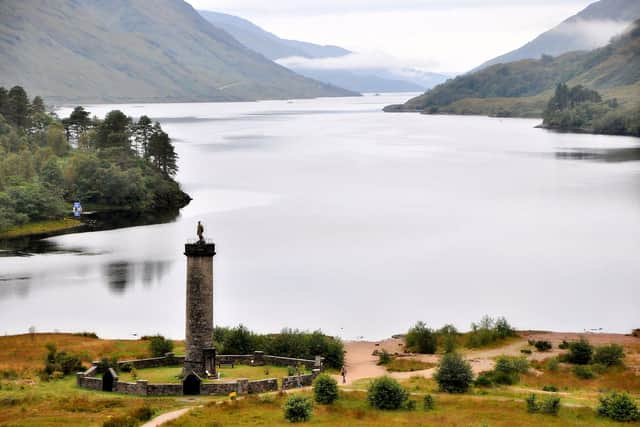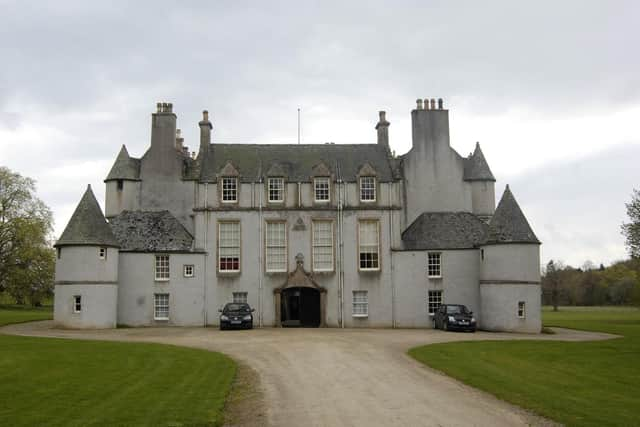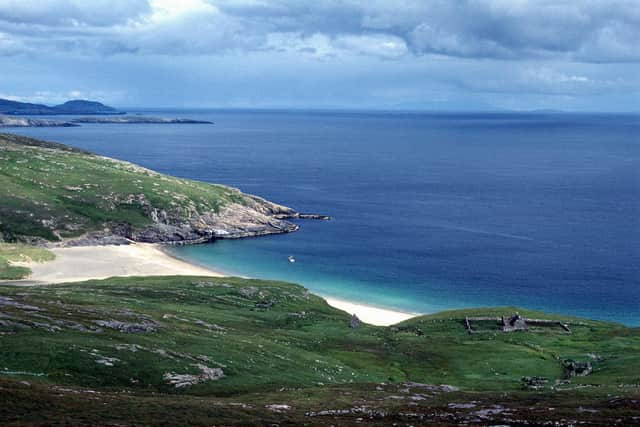Glenfinnan Monument and Culloden Battlefield linked to slavery in new National Trust for Scotland report
A major piece of research at the conservation charity has now identified 48 properties – up from around 20 recorded last year – with links to slavery. An interim report has detailed how wealth built in the plantations of North America and the Caribbean underpins a number of properties of historic interest in Scotland and the families connected to them.
Twenty NTS properties have been classed as having a direct link to the ownership of plantations and slaves, with the number expected to rise.
Advertisement
Hide AdAdvertisement
Hide AdThey include Leith Hall in Aberdeenshire given its connections to Sir James Leith, a former Governor and Commander-in-Chief of the Leeward Islands, whose troops quashed a major slavery revolt in Barbados in 1816, which led to the execution of 144 people and the transportation of 170 more.


Harmony Hall in Melrose, built for Robert Waugh, a joiner who emigrated to Jamaica and later became wealthy through ownership of a plantation and slaves, is another.
Connections between the islands of Mingulay, Pabbay and Berneray in the Outer Hebrides and slavery in the West Indies are also illuminated. They were bought in 1840 by John Gordon of Cluny. who was awarded a share in the the equivalent of £1.1 million in compensation for the loss of 653 slaves on plantations they inherited in Tobago.
The research will lead to a fresh interpretation by NTS to “offer our members and visitors a much more rounded and honest view of the past”, the charity said.


Dr Jennifer Melville, who led the Facing Our Past project, said: “Heritage organisations and curators across the world are very aware that they must look honestly at collections, properties and estates and reveal all the narratives relating to them.
"It is over ten years since our first project on slavery, but we are keen to increase this work and embed a thoroughly researched understanding of it into the visitor experience.
“We know that audiences have a thirst for knowledge, which is based in truth and thorough research. Slavery is part of our shared past and our audiences are demanding to know more about this.”
Culloden Battlefield has been recorded as having an indirect link to slavery given Prince Charles Edward Stuart sailed from Nantes to the Hebrides in summer 1745 on a French slave ship, the Du Teillay.


Advertisement
Hide AdAdvertisement
Hide AdThe vessel belonged to the wealthy Irish-born shipowner, slave trader and plantation owner Antoine Walsh, who took a leading role in financing and planning Bonnie Prince Charlie’s expedition to Scotland, according to the report.
The report also details the wealthy Scots who returned from the West Indies to buy up vast swathes of land at home.
Such a story surrounds the Glenfinnan Monument, which was built by Alexander Macdonald, 10th of Glenaladale, whose father – a Jacobite known as Golden Sandy – earned a vast fortune on a Jamaican coffee plantation before coming home and buying the estate.
Alexander squandered much of his inherited wealth, but built the Glenfinnan Monument to mark the spot where the Jacobite standard was raised by Prince Charles Edward Stuart in 1745. The monument is now one of the trust’s most popular attractions.
A message from the Editor:Thank you for reading this article. We're more reliant on your support than ever as the shift in consumer habits brought about by Coronavirus impacts our advertisers.
If you haven't already, please consider supporting our trusted, fact-checked journalism by taking out a digital subscription.
Comments
Want to join the conversation? Please or to comment on this article.
